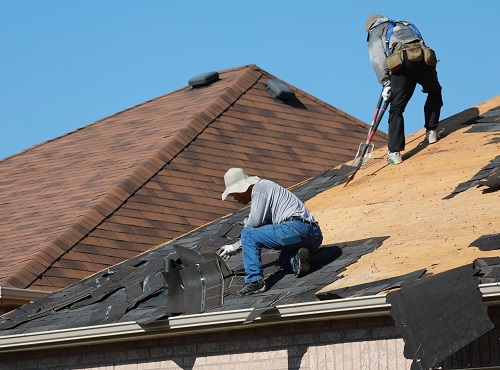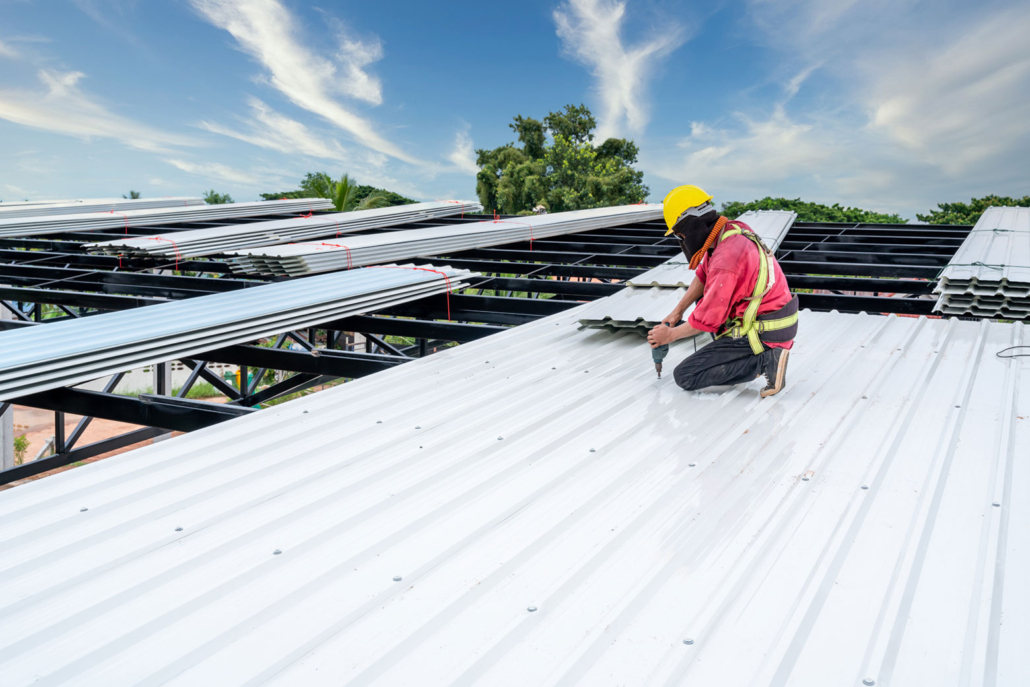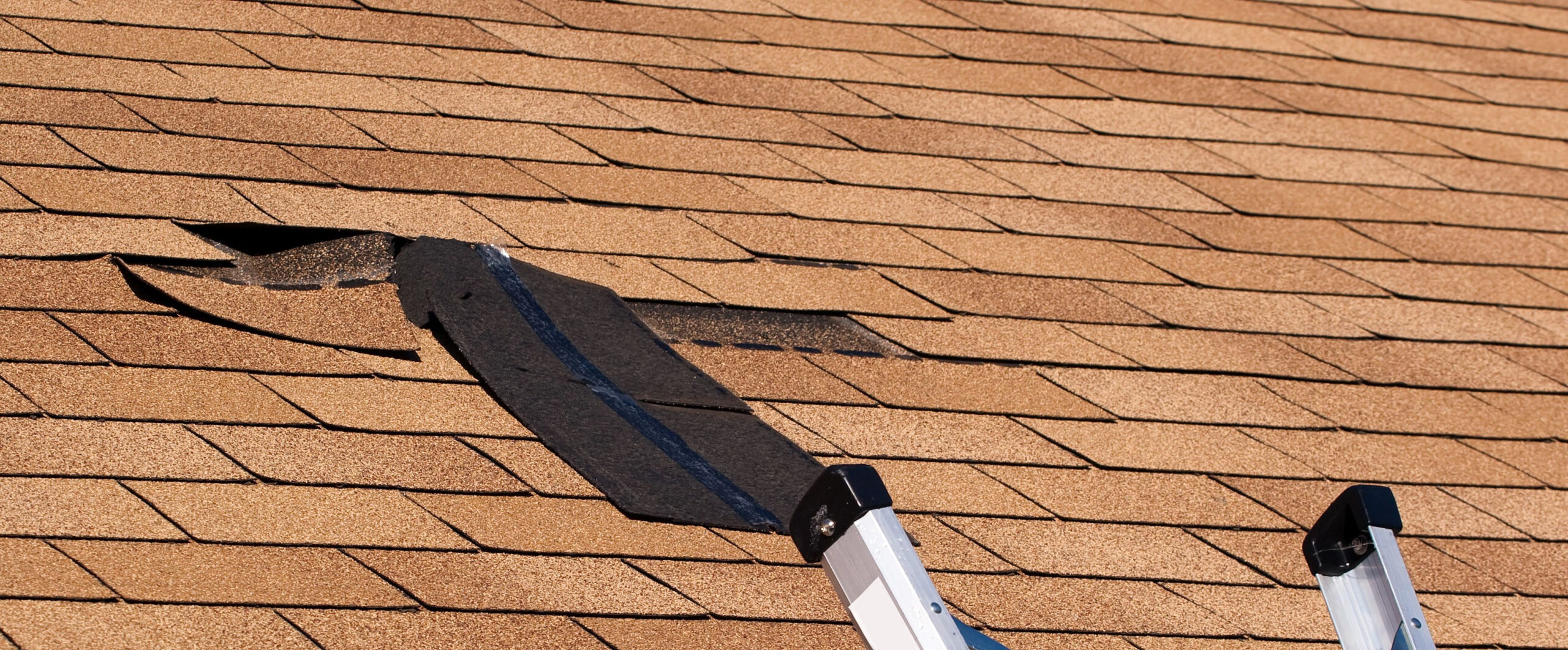Consequences of Neglecting Roof Repair Can Cost You Thousands
Indications You Need Roofing System Repair: Protect Your Financial Investment With These Easy Checks
Understanding the indications that show a need for roof repair is vital for securing your residential or commercial property and investment. Usual indicators such as missing tiles, unforeseen water spots, and granules building up in gutters can suggest underlying issues that, if left unaddressed, might intensify right into more severe troubles. Furthermore, signs like drooping locations or raised power expenses can also aim to inadequacies or damages. To guarantee your roof covering stays in top condition and to stay clear of expensive repairs, it is necessary to recognize these early warning indications and act as necessary. What actions should you take following?
Missing or Harmed Tiles
When reviewing the problem of your roof covering, one of one of the most telling signs of potential problems is the existence of missing or harmed tiles. Roofing shingles serve as the first line of protection against the aspects, and their integrity is vital for maintaining the total health of your roof covering system - I&E Roofing & Construction, Inc.. A few missing out on roof shingles may appear small, however they can cause considerable water seepage, jeopardizing the underlying framework and requiring extra substantial repair work
Harmed shingles can manifest in numerous ways, consisting of curling, cracking, or blistering. Each of these conditions can lower the performance of your roofing system, enabling dampness to permeate and bring about much more extreme issues. Roof Repair. It is vital to perform regular assessments, specifically after extreme weather condition events, as high winds and hefty rainfall can exacerbate tile deterioration
If you identify missing out on or harmed tiles, it is recommended to resolve these concerns quickly. While small repair work might be convenient for a property owner, substantial damages often requires specialist treatment. Prompt activity can prevent further difficulties and guard your financial investment, making certain the long life and efficiency of your roof covering.
Water Stains on Ceilings
Water discolorations on ceilings are often clear indicators of underlying water damages that calls for prompt focus. Recognizing the resource of these stains is vital, as they can result from various concerns, consisting of roofing leakages or pipes problems. Resolving the origin not only avoids additional damage yet likewise safeguards the integrity of the home.
Recognizing Water Damages

When examining for water stains, take notice of both the size and form of the discoloration. Irregular forms might recommend recurring leakages, while extra specified locations can indicate past concerns. In addition, take into consideration the area of the stains; spots near pipes fixtures or exterior wall surfaces might offer clues regarding potential sources of the water invasion.
It is also crucial to analyze the texture of the ceiling bordering the stains. Peeling off paint or bubbling drywall can signal comprehensive dampness exposure, warranting instant focus. Routine examinations and prompt activity can assist protect against more serious water damage, protecting both the architectural stability of the home and the investment it stands for. Always seek advice from a specialist for an extensive analysis if you find water spots on your ceilings.
Causes of Discolorations
What aspects add to the look of stains on ceilings? Water spots, commonly materializing as discolored patches, are largely created by leakages in the roofing or pipes systems - I&E Roofing & Construction, Inc.. When dampness penetrates through roofing products or endangered pipes, it can build up and cause visible staining on ceilings
One typical cause is harmed or missing roof shingles, which can permit rain to seep into the attic and, eventually, to the ceilings listed below. Additionally, improper flashing around chimneys, vents, or skylights can be a substantial source of water invasion. Plumbing leaks, whether from malfunctioning pipelines or overruning components, can also develop discolorations, particularly in locations straight listed below washrooms or kitchen areas.

Determining the source of the discolor is essential for reliable fixing. Neglecting these indicators can result in more extensive damage, consisting of mold and mildew development and structural weakening, highlighting the significance of timely intervention to shield your financial investment.
Granules in Seamless gutters
During regular evaluations of your seamless gutters, the existence of granules can be a considerable sign of roofing system wear and tear. These small, sand-like particles are normally found on the surface area of asphalt tiles, working as a safety layer against UV rays and weathering. Gradually, deterioration can trigger these granules to dislodge, resulting in a variety of concerns that might endanger the stability of your roof covering.
If you observe an accumulation of granules in your gutters, it is important to take this indicator seriously. The loss of granules might expose the underlying asphalt to the components, boosting the risk of leakages and water damages. This circumstance not only endangers your roofing system's life-span yet can likewise cause costly repair work otherwise dealt with immediately.
To alleviate potential damages, it is a good idea to examine your roof consistently, particularly after serious weather condition occasions. In addition, engaging a professional roof covering specialist to analyze the condition of your roof shingles can give beneficial insights. Early intervention is essential to protecting your investment and guaranteeing the long life of your roof covering system. Remember, granules in rain gutters are not an insignificant problem; they indicate the need for prompt interest and prospective repair service.

Drooping Roofing Areas
Sagging roof covering locations can show serious structural concerns that need immediate attention (Roofing Service). Noticeable defects on the roofing system's surface area, integrated with the visibility of water stains inside the home, are important indication that should not be forgotten. Addressing these problems without delay can prevent further damages and expensive fixings
Visible Roof Deformities
Exactly how can homeowners recognize prospective concerns with their roofing systems? Among one of the most telling indications is visible roof covering defects, especially sagging areas. A drooping roof may appear as dips or contours, suggesting underlying structural problems that might endanger the honesty of the whole roof system. Home owners need to conduct regular examinations, searching for any type of visible irregularities in the roofline.
Several elements can add to noticeable defects, consisting of water damage, improper installment, or the weight of collected snow and debris. If a roofing appears to sag, it may suggest damaged rafters or trusses, which can lead to much more serious concerns if left unaddressed. A sagging roofing system not only jeopardizes the structural stability of the home but can additionally cause pricey fixing expenses if the problem rises.
If drooping or various other visible deformities are observed, it is suggested to seek advice from an expert roofing service provider. They can assess the scenario, identify the reason for the sagging, and suggest suitable fixing options. Timely treatment is important to shield your financial investment and ensure the longevity of your roofing.

Water Stains Inside Home
The presence of water stains inside the home frequently signals prospective concerns with the roofing system, especially in locations where sagging has actually been observed. These spots commonly suggest that water is permeating through the roofing material, which can result in significant structural damages if left unaddressed. Sagging roofing system locations might be brought on by a selection of elements, consisting of inadequate assistance, built up dampness, or the degeneration of roof products.
When you observe water discolorations, it is important to check out the source of the moisture. Try to find indications of sagging in the roof structure, as this can exacerbate the problem. Often, drooping areas can trap water, resulting in leaks and additional damage. Additionally, it is vital to examine the age of the roof; older roofings are a lot more at risk to deterioration, increasing the chance of leaks.
Motivate activity is required to alleviate damage. Seek advice from a qualified roofing expert to evaluate the circumstance and advise appropriate repair work. Ignoring water spots and sagging can bring about pricey repairs and compromise the stability of your home. Safeguard your investment by resolving these indications prior to they escalate into extra extreme troubles.
Increased Power Expenses
An unforeseen spike in energy costs can frequently indicate underlying issues with your roofing system. When your roofing system is jeopardized, it can lead to substantial air leaks, allowing conditioned air to leave and unconditioned air to infiltrate your home. This inadequacy forces your heating and cooling down systems to function harder, leading to enhanced power usage and greater utility prices.
One common offender is damaged or missing out on tiles, which can expose your home's inside to the elements. In addition, insufficient insulation due to roofing damages can add to power loss. If you notice a regular increase in your energy costs without an equivalent change in usage practices, it is important to investigate possible roof-related problems.
Routine roofing evaluations are important for recognizing problems before they escalate into costly fixings. Try to find visible indications of wear, such as drooping locations, fractures, or voids. These might indicate that your roofing system is no much longer providing the essential obstacle against the aspects. Attending to these concerns immediately can assist restore your home's energy performance and shield your financial investment over time. If you believe a problem, get in touch with a roof covering specialist for a comprehensive assessment.
Mold or Mildew Development
Mold or mildew development on your ceiling or wall surfaces can be a clear indication of roof-related problems, especially when dampness infiltrates your home. These fungi grow in wet environments and can pose serious wellness risks, including breathing issues and allergic responses. Their presence usually suggests that your roofing might be compromised, allowing water to leak in via leaks or spaces.
To evaluate the situation, seek dark places or staining on surface areas, commonly in locations near to the roofline or where water may collect (Roofing Companies St Louis MO). In addition, look for any kind of water stains, peeling off paint, or soft spots in your ceiling or walls, which may indicate ongoing wetness troubles
If you observe mold and mildew or mildew, it is important to act rapidly. Not only can proceeded dampness damages your home's architectural integrity, however it can likewise bring about pricey fixings down the line. Involving a professional roofer can assist determine the source of the problem, whether it's damaged tiles, inappropriate ventilation, or various other problems. Normal inspections and maintenance can help protect against mold growth and shield your investment, guaranteeing a safe and healthy and balanced living setting.
Age of the Roofing
Assessing the age of your roofing is crucial in determining its total problem and possible demand for repair work. A lot of roof products have a certain life-span, typically varying from 15 to three decades, relying on the type of product utilized. Asphalt shingles, for circumstances, typically last about 20 years, while metal roofing systems can endure for 40 years or more. As roofs age, they become more susceptible to harm from climate, bugs, and various other environmental elements.
Regular examinations are essential for roofings older than 15 years. Indications of wear, such as cracked or crinkling tiles, missing ceramic tiles, or corrosion on steel surfaces, indicate that your roofing might require immediate interest. Furthermore, inner symptoms like water stains on ceilings or walls can indicate underlying concerns connected to an aging roofing system.
If your roof is approaching its expected life-span, take into consideration seeking advice from a specialist roofer for a detailed evaluation. They can provide understandings on repair work choices or suggest a substitute if needed. Aggressive management of an aging roofing can prevent costly damages to your home and assurance that your financial investment stays secured.
Frequently Asked Concerns
How Usually Should I Inspect My Roofing System for Damage?
Regular roof evaluations are vital for preserving the honesty of your home. It is advisable to examine your roofing system a minimum of twice a year, preferably in the springtime and loss, to identify any possible issues early. In addition, after extreme weather events, such as heavy storms or hail, a complete evaluation is suggested. Resolving small damage immediately can prevent expensive repair work and prolong the life expectancy of your roofing system considerably.
Can I Fix My Roof Myself?
While it is feasible to repair your roof on your own, it is vital to analyze your skills and the complexity of the damage. Minor concerns, such as replacing a few shingles, may be workable for a do it yourself lover. However, substantial repair services or architectural worries commonly require specialist experience to guarantee security and conformity with building regulations. Always prioritize your safety and consider consulting a roof specialist for substantial damages or if you are unsure concerning the repairs.
What Are the Typical Reasons For Roof Covering Leaks?
Usual root causes of roofing leakages consist of damaged shingles, which can occur because of age or severe climate, and poorly sealed vents or blinking that might allow water penetration. In addition, blocked seamless gutters can result in water backup, resulting in leaks. Architectural concerns, such as drooping roof coverings or jeopardized underlayment, additionally add to this problem. Regular evaluations and maintenance are vital to identify these vulnerabilities and avoid expensive damage to your building.
Just How Can I Pick a Dependable Roofer?
Selecting a reputable roofer includes comprehensive research and analysis. Begin by seeking recommendations from trusted resources and inspecting on the internet reviews. Verify the service provider's licensing, insurance policy, and experience in roof jobs comparable to your own. Demand detailed quotes and compare them for transparency. Furthermore, inquire concerning warranties and post-installation support. A trusted service provider must interact plainly and show expertise throughout the process, guaranteeing your financial click investment is well protected.
What Is the Average Life Expectancy of Different Roof Covering Products?
The typical lifespan of roof covering products varies substantially. Asphalt tiles normally last 15 to thirty years, while steel roofings can withstand 40 to 70 years. Wood drinks usually have a life-span of 20 to 40 years, whereas clay or concrete ceramic tiles can surpass half a century with appropriate maintenance. Synthetic roof products may provide durability similar to conventional choices, commonly long-term 30 to 50 years. Comprehending these life expectancies aids in preparing for upkeep and replacement.